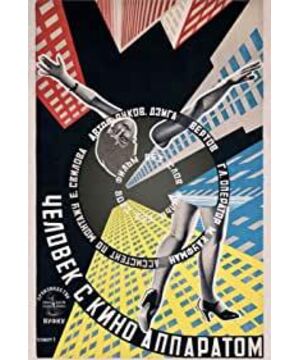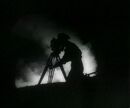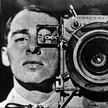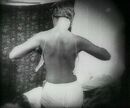In 1922, he founded the "Film Pravda", established the film eye group, and began to experiment with the possibility of various film languages with his partners. The genre attracted a group of young movie lovers, including Eisenstein and Cobalin. Vertov's influence on Soviet cinema is unparalleled. Vertov was born in 1896, Pudovkin in 1893, Eisenstein in 1898.
"The Man with the Camera" is the epitome of the cinematic eye theory. This film documentary pursues visual impact. Explore the possibilities of cinematography with the technology of the time. The biggest revolution was the movement of the camera.
The movement of the camera is divided into lens movement and camera position movement.
The movement of the lens means that the camera position remains unchanged, and the lens moves from left to right or up and down. The left and right movement of the camera lens was used by Griffith twice in "The Birth of a Nation" in 1915, and several times in "Party Dissent" in 1916. When it came to Eisenstein's "Battleship Potemkin", it was frequently used, and it was not limited to panning left and right, but also panning up and down and sideways many times. When it came to "The Man with the Camera", I tried the 360-degree movement of the camera lens. The camera imitates human eyes from various angles, panning left and right, up and down, side view, around... The camera moves from the ground to the gate of the factory, from the gate to the sky of the factory, and from the sky down to the left side of the gate of the factory , the ground of the gate, the right side of the gate, and then to the sky. This is a circular sight that mimics the human eye, like a person standing in front of a factory gate, turning his neck and looking around.
The most revolutionary aspect of the film is the various movements of the camera positions, which basically cover all the camera movement forms in the chapter on "Camera Movement" in various textbooks today. For example, put the camera on a carriage, a car, etc., and run after the subject (Wong Kar-wai's common technique). Or the subject doesn't move, the focus doesn't change, and the camera shoots it from left to right or top to bottom, (remember? All kinds of long shots now). Or break through the limitations of the human eye and place the camera in a variety of unexpected positions to shoot, such as in the train track, to shoot the train rumbled by the track; on the towering factory chimney, to shoot the bird's-eye effect of the city... …Think about the later underwater photography and aerial photography; for example, zooming in and taking a lot of details: the human hand, the human eye, the back of someone’s head, the turning of a machine, a close-up of a part… I admit, this film explores all the possibilities of the camera.
The film also contributed fast and slow motion to the film language. Especially in slow motion, the part about the movement of athletes in the film is shown in slow motion, so that the audience can carefully and clearly see every detail of the athletes during the movement. The athletes in the slow motion are free and easy and graceful, with a lyrical feeling.
The film has a "camera dance": a camera on a tripod, it shakes its head, it nods, it beckons, it walks...full of human emotion. In effect, it's the audience projecting their own emotions onto it. Just like the "Dance of Plastic Bags" in "American Beauty" later, people found that after proper editing, objects can also be used to express human emotions like literature.
These lyrical and emotional discoveries have made cinema a new way of writing and one of the reasons people see cinema as art.
The greatest contribution of any exploration of film is to expand the possibilities of film language. This possibility would later slowly become the norm of film language, thereby enhancing human expressiveness.
The Man with the Camera is one such exploration film. Exploring is revolutionary.
View more about Man with a Movie Camera reviews







